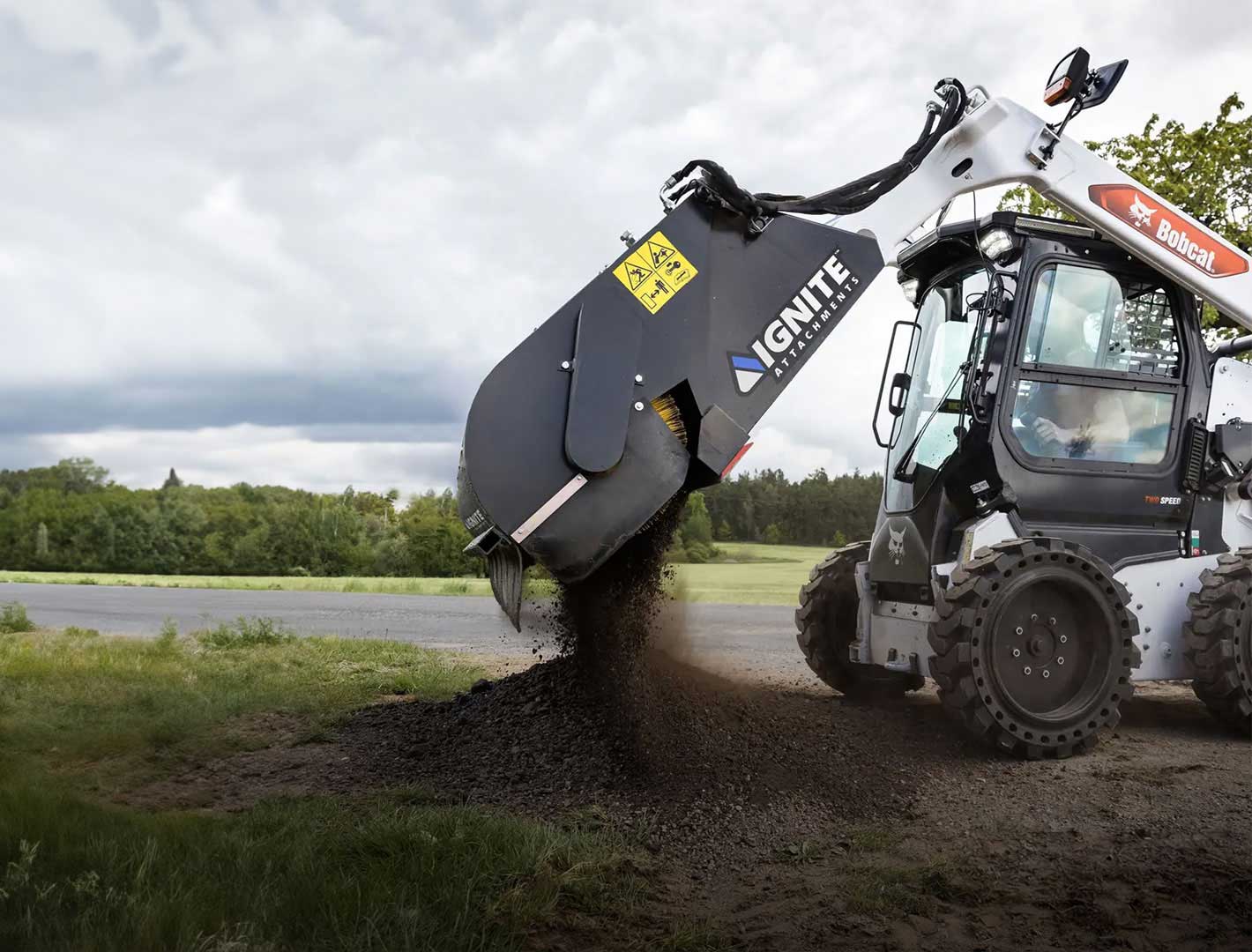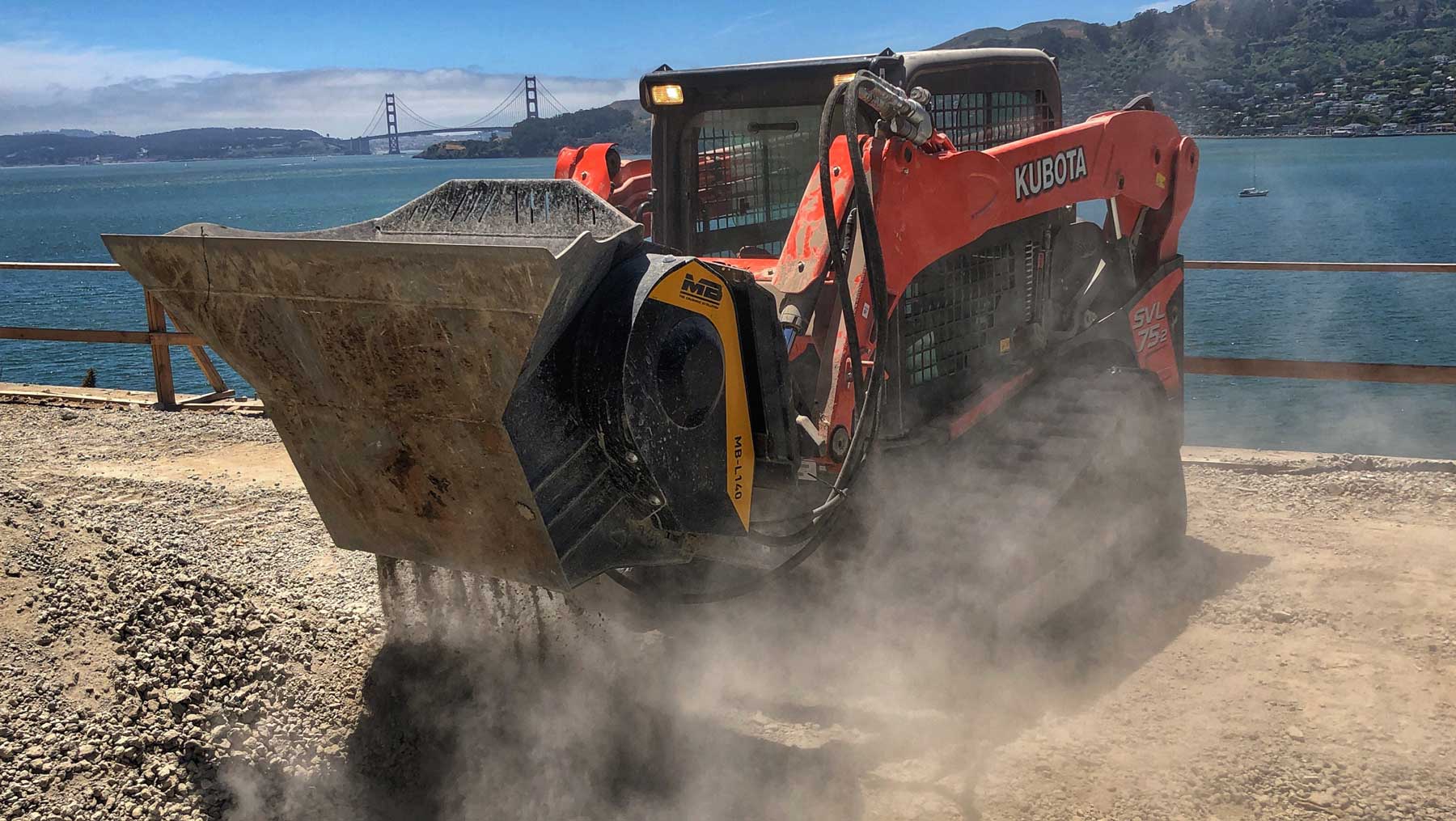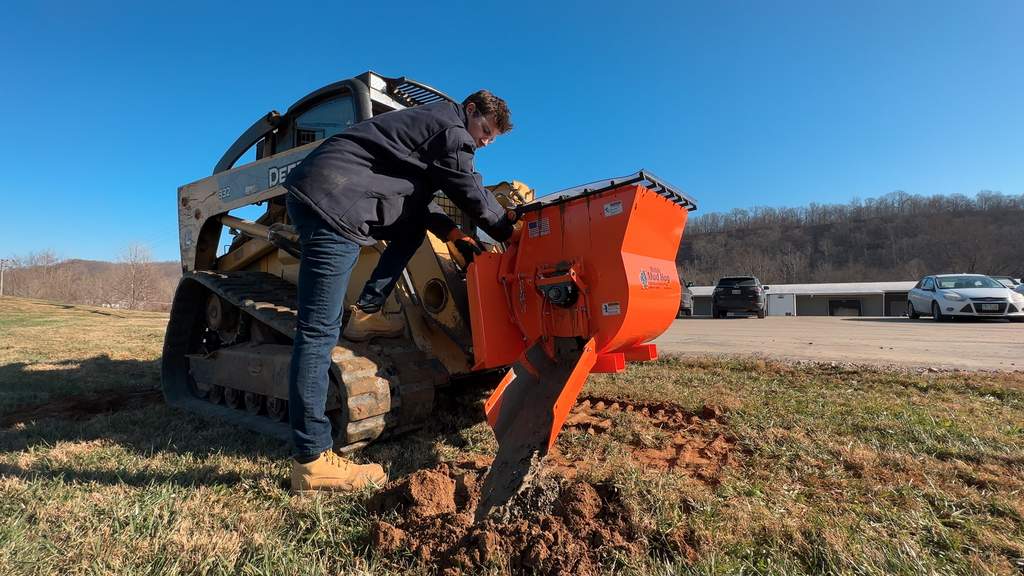Signs Your Loader Needs an Auxiliary Hydraulic Cooler
Cool It Now
The enemy of productivity is downtime — something most contractors can’t afford. So when hydraulics redline and force operators to take unwanted breaks, work stops. This doesn’t typically happen under regular operating conditions for a skid steer loader or backhoe, for instance, but tack on almost any attachment that runs off the auxiliary hydraulic circuits and the potential is there. Under intense loads or high ambient temperatures, hydraulics can overheat, which might mean putting your machine out of commission for lengthy periods of time until the oil cools to a safe level. Assuming the machine’s factory hydraulic coolers are performing adequately and there are no underlying maintenance requirements, overheating under continuous duty operation indicates the need for additional help. Therefore, fitting the machine with an auxiliary hydraulic cooler may be the answer.
Ambient Temperature
Maybe it’s summer heat or you’re simply working in an area that’s warm most of the year. Regardless, it pays to watch the mercury, since high air temperatures can burden hydraulics. Dedicated machines such as trenchers and bulldozers are likely in the clear. Unless the factory coolers aren’t working properly or there’s an underlying design flaw, these machines should run fine without an auxiliary cooler even in hot environments. But when it comes to versatile equipment such as skid steers, the hydraulic systems can come under serious pressure when specialized attachments put them through the paces. In such instances, an auxiliary hydraulic cooler that continuously keeps hydraulics at safe levels will ensure the work continues even as air temperatures rise.
Extreme Attachments
Not every attachment will cause hydraulics to overheat. Depending on how much they burden the machine, as well as how they are used, many attachments can run just fine for extended periods. However, there are certain attachments that require more power, more frequently. These include rotary drum mulchers and cold planers, which can use 100 percent power nearly the entire time they’re operating. These tax a hydraulic system unlike other attachments, especially on smaller track loaders or skid steers that just meet the specification requirements to properly run them. Obviously, to complete the task at hand, these machines need a boost in cooling. An auxiliary hydraulic cooler will accomplish this, as well as ensure that neither the attachment nor machine are damaged from demanding use.
Continuous-Duty Operation
Just as certain attachments may burden a machine because of their design, how an attachment is utilized also plays a role. Continuous use over a given amount of time is more likely to cause hydraulics to overheat compared to an attachment running intermittently. Although highly useful and versatile, a rotary broom attachment hardly seems like something that would cause hydraulic strain. However, operators tend to run them continuously in parking lots or along sidewalks, while also applying enough down pressure to leave a clean surface. The down pressure causes the hydraulic motor to work harder, which, because it is being used continually, causes the hydraulic oil to heat more than the factory cooler can maintain.
Bill Schafer is a product development supervisor with Loftness.





At what temperature should I be concerned?